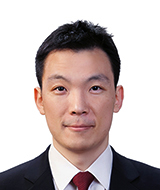
Please introduce us to the fields that are being researched.
In the Graduate School of Medical Science and Engineering, within the School of Convergence Science and Technology (SCST) at POSTECH, a diverse array of research in various fields are underway. The area of research spans from fundamental life science and medical science research, such as molecular biology, immunology, stem cell biology, and neuroscience, to biomedical engineering research, including biomedical imaging, biosignal processing, 3D printing, organoids, and wearable devices. Additionally, research on mathematical and statistical fields, such as mathematical biology, hemodynamics, and genomics, is also being conducted. Collaboration among professors from various fields is a hallmark of the research projects undertaken.
How did you become interested in medical science and engineering?
I became interested in medical science and engineering with a vague desire to become a physician who not only treats patients but also conducts research and teaches. During medical school, I found subjects like molecular biology, immunology, and physiology particularly more captivating. While specializing in ophthalmology, I encountered patients with rare and incurable conditions such as retinal degeneration, uveitis, and retinal ganglion cell tumors. Witnessing their suffering, I aspired to become a doctor who could offer more than just empathy — one who could actually heal these conditions. Thus, I pursued further education in research by enrolling in the KAIST Graduate School of Medical Science and Engineering after obtaining a residency in ophthalmology. There, I obtained my Ph.D. in cell biology. Subsequently, I conducted research in vascular biology and glial cell biology as a postdoctoral researcher at the Institute for Basic Science at Washington University in St. Louis. While in the United States, I realized that becoming a top-tier scientist might be challenging when I am simultaneously trying to conduct clinical practice and research. Contemplating between the two, I was fortunate to be offered a faculty position at POSTECH when the Graduate School of Medical Science was established.
What results are you anticipating with your current research?
My current research focuses on neuroimmunology and vascular biology. I study the immune and vascular systems within the central nervous system (CNS), including the brain, retina, and spinal cord, as well as surrounding barrier tissues such as the meninges, skull, and pia mater. My research goal is to comprehensively understand CNS barrier immunity, which protects and monitors the most critical organs in our body—the brain and eyes—from external threats. Additionally, I aim to understand the interactions between these systems and surrounding neurons and blood vessels, known as neuro-immuno-vascular interactions. Through this understanding, I hope to propose new therapeutic strategies for challenging neurological disorders such as uveitis, multiple sclerosis, dementia, and brain tumors.
Where is medical science and engineering (your current research topic) going and what developments have been made?
Neuroimmunology is indeed a burgeoning field that has garnered increasing attention in recent years. After immunologist Peter Medawar — who won his Nobel Prize in Physiology or Medicine for his discoveries concerning acquired immunological tolerance — coined the term “immune privilege” for the CNS in 1960, it was long believed that there was a disconnection between the nervous and immune systems. However, the discovery of lymphatic vessels within the meninges of the brain about a decade ago revealed that the CNS, immune system and vascular system are closely interacting. Subsequent research has shown that the CNS immune system is deeply involved not only in the development of the brain, formation of synapses, and maintenance of homeostasis but also, as well as in the pathological mechanisms of underlying conditions like depression, autism, and dementia. In the case of dementia, for example, antibodies targeting amyloid-beta (Aβ), such as aducanumab and lecanemab, have received Food and Drug Administration (FDA) approval. Recent advancements in immunotherapy, including immune checkpoint inhibitors and cell therapies such as anti-PD1 and CAR-T cell therapies, have provided new hope for cancer patients. Similarly, it is expected that in the not-too-distant future, immune-based therapies may also become a viable option for treating dementia.
Is there any advice for students aspiring to be an active researcher in the field of medical science and engineering?
For students aspiring to be active researchers in the field of medical science and engineering, I would recommend not only focusing on school courses but also exploring the achievements of Nobel Prize or Lasker Award winners, attending their lectures, and reading their interviews or autobiographies. Reading books on the history of medical science and engineering or general-interest literature in the field can also be beneficial. Through this, you can grasp the broader trends in the field of medical science and engineering and determine if this field aligns with your interests. Additionally, with recent advancements in technologies such as single-cell sequencing and state-of-the-art imaging and measurement techniques, the ability to process and analyze large amounts of data has become increasingly important. Taking relevant courses in mathematics, statistics, and computer science during undergraduate studies can be helpful in preparing for a successful research career in this field.


